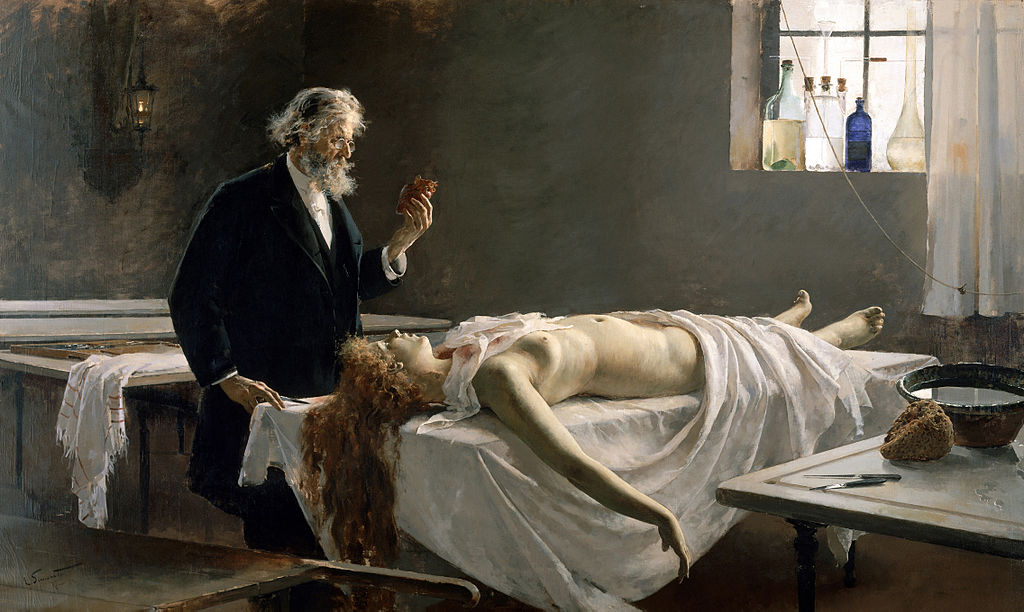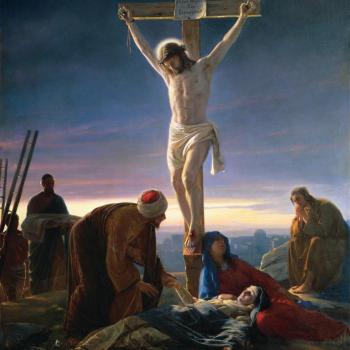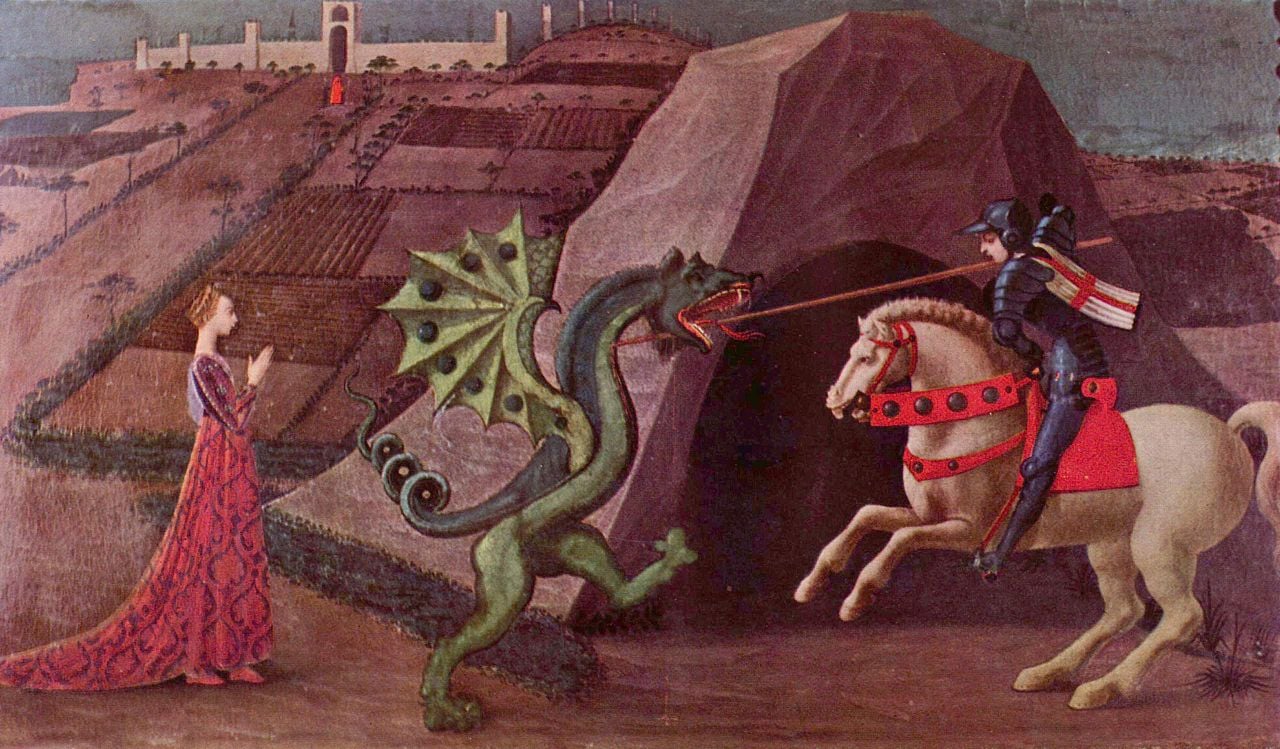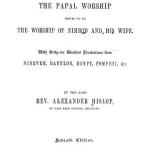
It is Good Friday, and we are reminded of the day that promise gave way to despair. A weak, powerless man hung before a crowd to be beaten, mocked, and killed. All the rhetoric of salvation and eternal life reduced to naked, quivering flesh.
To the modern mind, the death of Christ is evidence against Christ: What kind of God would create a world where human beings must endure such suffering? As Flannery O’Connor observed in her introduction to A Memoir of Mary Ann, “One of the tendencies of our age is to use the suffering of children to discredit the goodness of God, and once you have discredited His goodness, you are done with Him.” In place of God, we try to eliminate suffering through our own efforts.
The Catholic novelist and essayist Walker Percy rekindles O’Connor’s concerns in his 1987 novel The Thanatos Syndrome, his sequel to Love in the Ruins, a mystery surrounding a group of scientists in a future America who attempt to eliminate human suffering through medicine and euthanasia. The protagonist is the psychiatrist (or “psyche-iatrist”) Dr. Thomas More, a self-described “bad Catholic” and one of the last remaining doctors to treat the ailments of the soul rather than simply prescribing medications. In the past, Tom was respected in the medical community for his discovery of heavy sodium ions that can sedate the region of the brain from which human malady flows. He is currently disgraced, however, after his recent time spent in prison for prescribing amphetamines to truck drivers to help them stay awake on long trips. When he returns to his home in Louisiana, he discovers that these scientists have begun a pilot program, “Blue Boy,” in which they had been drugging the local water supply with heavy sodium ions, all for their ameliorative effects on society—to reduce child abuse, wife battering, violent crime, AIDS, and teenage pregnancy. At the same time, Tom observes strange behavior in his patients such as simplified linguistic capabilities, idiot-savant recollection of random facts, and especially their animalistic, perverse sexual behavior. Rather than simply suppressing human malady, the scientists have depersonalized the subjects and numbed the will, therefore removing human freedom. Furthermore, Tom uncovers the scientists’ new Qualitarian Centers that are euthanizing the sick, elderly, and even “rejected” infants, all in the name of social stability and compassion for the suffering. (For a fuller summary, click here.)
So what do the sexual perversions of Tom’s patients have to do with the scientists’ efforts to euthanize the sick and suffering?Percy’s future society illustrates what John Paul II called “the civilization of death,” which he juxtaposes to the “civilization of love.” In his 1994 Letter to Families, written in honor of the Year of the Family, JPII describes how civilization of love is formed by an integral humanism that is rooted in the “great mystery” of the sacrificial love that flows from Christ’s spousal act on the Cross into the love of man and woman. By “spousal act,” he is referring to the “spousal meaning of the body,” that is, that man and woman are created in the image of God and endowed with the power to express love: “precisely that love in which the human person becomes a gift and—through this gift—fulfills the very meaning of his being and existence” (TOB 186). In the Theology of the Body, JPII teaches that authentic love between husband and wife must be of this sacrificial nature. Therefore, through an understanding of love as a complete gift of self, we see how both sexuality and suffering can be rooted in the same sacrifice: Christ’s death on the Cross.
While integral humanism is rooted in this great mystery, the humanism of the “civilization of death” that Thanatos demonstrates is formed by scientific rationalism and is therefore opposed to all mystery. It is characterized by selfish individualism rather than the selfless, authentic love that characterizes integral humanism.
One of the best ways in which Thanatos illustrates this contrast between the two civilizations is when Tom More has sexual intercourse with his wife Ellen for the first time since his release from prison. Tom describes the experience in a way that reveals its animalistic and de-personalized manner, which is how he realizes that Ellen too been drugged by the sodium ions. Their sex is evidently unsatisfying to him as he says, “We have never made love so. Her head is turned and I miss seeing her face” (Percy 55). In this instance, Tom still retains the goodness of personalism that is represented in the civilization of love, as he desires to recognize his wife in her completeness and bond with her in love. Ellen exhibits individualism, as she seems only to be following instinct and satisfaction of desires. Her display of animalistic tendencies is indicative of a creature that has no will, no freedom through which to give herself to her spouse and her spouse alone; thus she and Tom are depersonalized in their act because she is unable to receive Tom as “someone unique and unrepeatable, someone chosen by eternal Love” (TOB 188).
Furthermore, Tom and Ellen’s sexual relations bring out another important aspect of the mystery of personhood: freedom of will. The Theology of the Body explains that love rooted in self-gift makes human beings distinct from animals; for in order to give oneself to another, one must first possess his or her own self. John Paul II draws from Gaudiem et Spes to explain that this ability of self-gift is only possible because “man is the only creature in the world that the Creator willed ‘for its own sake,’ and ‘this same man, willed in this way by the Creator from the ‘beginning,’ can only find himself through a disinterested gift of self” (TOB 187). As man is the only creature to whom God has given self-mastery and freedom of will, he can choose either to use this freedom to give himself to others and to receive them as persons (personalism), or he uses freedom as the license to do whatever he wants, treating others as an object for his pleasure or use (individualism) (Letter to Families 22).
Later in the story, Tom also discovers that John Van Dorn, one of the supporters of Blue Boy, is simultaneously operating a boarding school as a secret testing facility for his theories on sexual liberation that surpass even Freud. In this second example of sexual perversion, Percy shows how the rationalism of the civilization of death further diminishes the mystery of personhood, as Dr. Van Dorn’s sexual education teaches the children a lie about their personhood: that human action is determined by “libido” rather than the will that man controls through his spiritual freedom (TOB 547). One of the major issues in The Thanatos Syndrome is Percy’s “over-sexualized” writing, especially his detailed descriptions of lust, sexual perversion, and in this case the sexual abuse of children. As Tom fights to expose the school for what it really is, however, we see that Percy is really grasping at what John Paul II claims in his Theology of the Body: the idea that sexuality is intimately related to the self and therefore is central to our self-knowledge, relationship with God, and human relationships within society. In Thanatos, he demonstrates that rightly-ordered sexuality is the first thing to be lost as the civilization death encroaches.
In Letter to Families, JPII warns that this depersonalized view of man that the proponents of scientific rationalism hold is especially dangerous when it makes humans expendable. The scientists justify their Qualitarian Centers as respecting “the rights of the unwanted child not to have to suffer a life of suffering and abuse, the right of the unwanted aged to a life with dignity and a death with dignity” (Percy 216). JPII writes that this way of thinking leads to the tendency to consider the human “on the basis of its similarity to all the other bodies present in the world of nature, bodies which man uses as raw material in his efforts to produce goods for consumption” such as in experimentation on embryos and fetuses (Letter 37-8). In his fight to close the Qualitarian Centers, Tom More answers JPII’s call for the family to embrace suffering by making room in the community for “people with physical or psychological handicaps, of whom the so-called ‘progressive’ society would prefer to be free” (Letter 36).
Walker Percy would whole-heartedly agree with Flannery O’Connor when she wrote that “evil is not a problem to be solved, but a mystery to be endured.” We endure this mystery through what John Paul II calls redemptive suffering. In his letter Salvifici Doloris, he writes that:
We could say that suffering…is present in order to unleash love in the human person, that unselfish gift of one’s “I” on behalf of other people, especially those who suffer. The world of human suffering unceasingly calls for, so to speak, another world: the world of human love; and in a certain sense man owes to suffering that unselfish love that stirs in his heart and actions.
JPII goes on to say that to unite our sufferings to those of Christ is to suffer for the kingdom of God. In the civilization of death, evil wraps itself in tenderness, encouraging man to kill all capacity for suffering and therefore all capacity for surrounding ourselves in the mystery of Christ’s Redemption.
Through their writings, Walker Percy and John Paul II give us a similar diagnosis of the malaise that infects the modern age. Percy terms the illness that infects the civilization of death thanatos (the Greek word for death): a submissive, suicidal passage into death. John Paul II juxtaposes this kind of death to a different death: death to self through charity. This charity is not sentimentality or tenderness. It is self-denial, mortification, dark, violent, ridiculed, beaten, suffering, weak, abandoned, arms and hands stretched open, the ultimate instance of humility: when God emptied himself by assuming the form of a slave, and was made in the likeness of men.
This is the death that we feel so heavily today on Good Friday. As Christians, though, we know that the great paradox of the Resurrection is yet to come: when Life will come out of death. The civilization of death tries to eliminate suffering and distort sexuality because both are intimately linked to the Cross through self-gift. It was through Christ’s suffering on the Cross that he fully gave himself to us, and through the sacrifice of the Eucharist he continually gives himself to us. Likewise, it is through the conjugal act that a man and a woman fully give themselves to one another to become two in one flesh. When we profess our vows to Christ at the offertory of the Mass, we are participating in his Sacrifice by making ourselves into a full gift to him. This union is then consummated as we eat his Body and drink his Blood, making us two in one flesh with Christ. We must therefore be mindful that in order to rise with Christ on Easter Sunday, we first die to ourselves with Christ on Good Friday.
***
Anna Pfaff is a Junior at Hillsdale College majoring in American Studies with a minor in Spanish. She loves the outdoors, Flannery O’Connor, and her sisters, but all three together is even better.

















